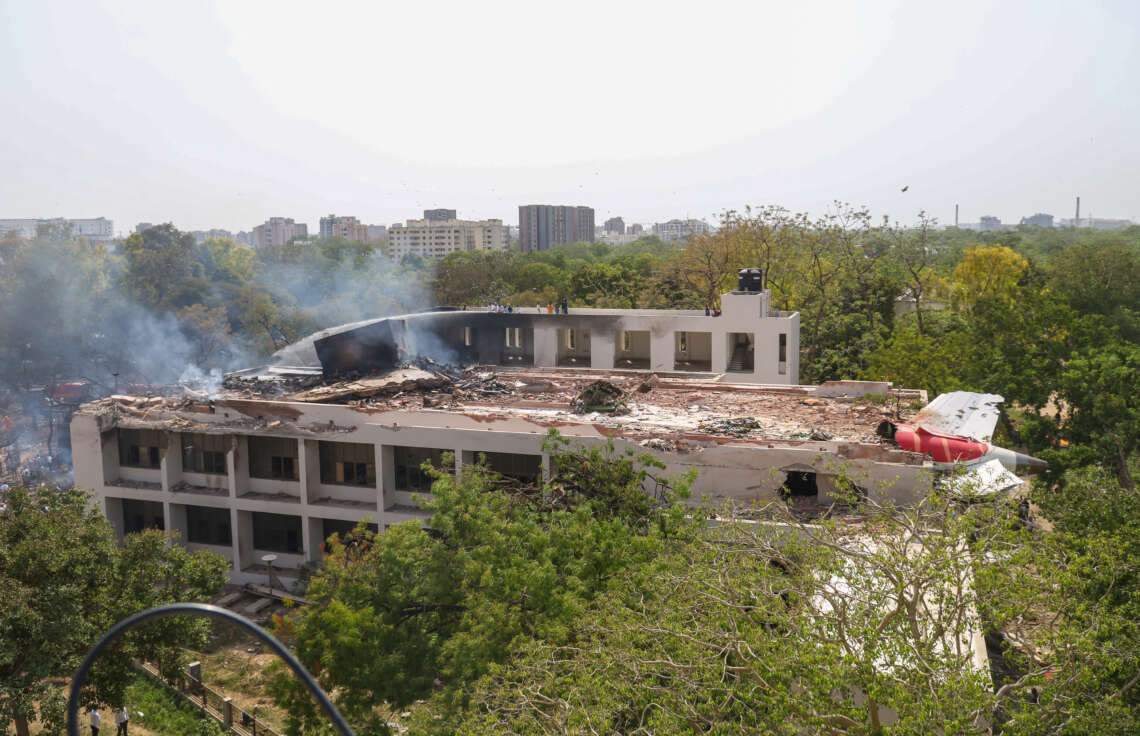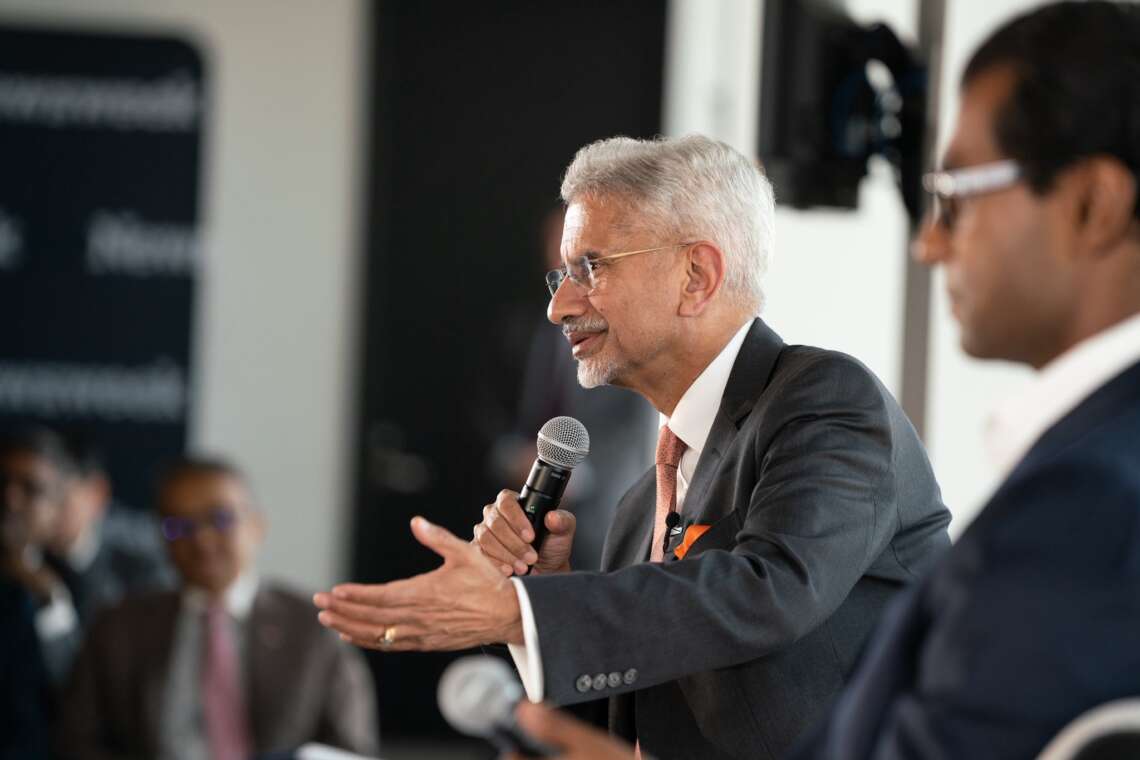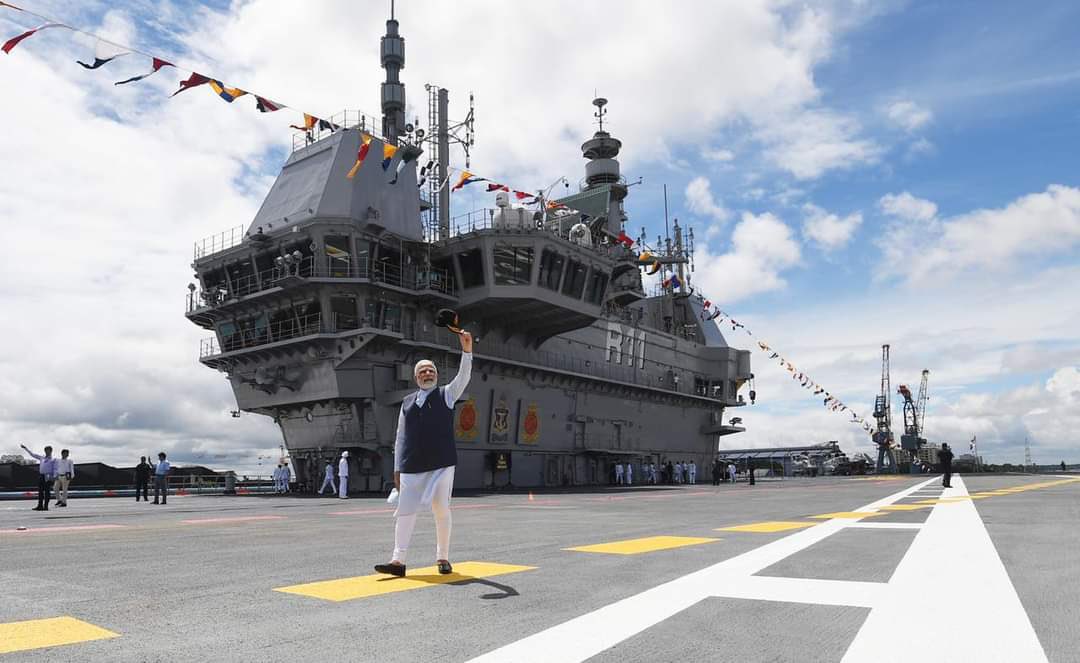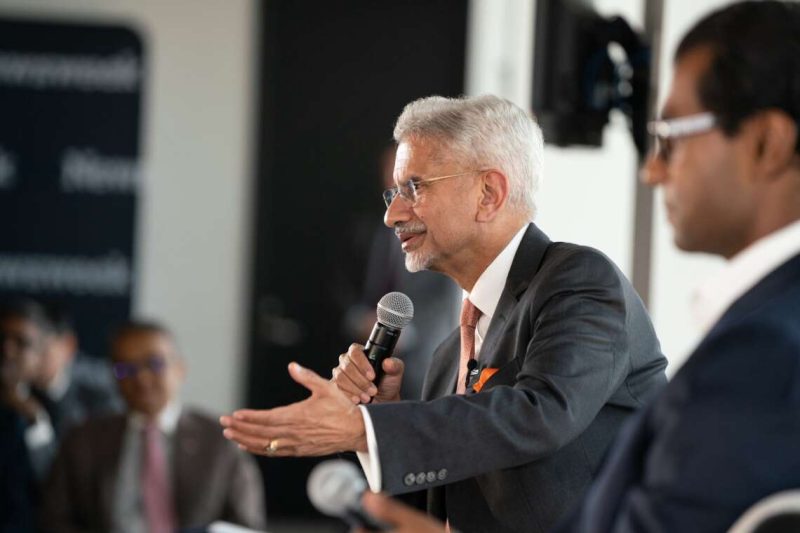The AAIB has yet to confirm which pilot touched the switches, but voice matching experts are now reviewing the cockpit audio…reports Asian Lite News
Investigators probing the deadly crash of Air India Flight 171 have uncovered a deeply troubling sequence of events: both fuel-control switches on the aircraft were moved to the “cut-off” position just seconds after take-off, starving both engines and causing a total loss of power.
The London-bound Boeing 787 Dreamliner plunged into a densely populated neighborhood in Ahmedabad on June 12, killing all 241 passengers and crew onboard and 19 people on the ground. The jet, only 12 years old, was airborne for less than a minute before it crashed.
According to the preliminary report released by India’s Aircraft Accident Investigation Bureau (AAIB), cockpit voice recordings captured one pilot asking the other, “Why did you do the cut-off?” The other pilot replies, “I didn’t.” But the audio doesn’t clarify which pilot made which remark. At the time, the co-pilot was flying while the captain was monitoring.
Both fuel switches were quickly flipped back to their “run” position, initiating automatic engine relight. But by the time one engine began regaining thrust, the other had not yet recovered, leaving the aircraft fatally short on power.
The AAIB’s initial findings—compiled with assistance from Boeing, General Electric, Air India, Indian aviation authorities, and experts from the US and UK—raise critical questions about cockpit behavior, possible system faults, and safety oversight.
Startling and Unprecedented
The switches in question are lever-lock controls, specifically designed to prevent accidental activation. Pulling them to “cut-off” mid-flight is virtually unheard of, aviation experts say, and the controls are guarded by brackets to prevent bumping. A Canada-based crash investigator told the BBC, “It would be almost impossible to pull both switches with one hand. Accidental activation is highly unlikely.”
This has led investigators to consider a range of possible explanations—from intentional pilot action to system malfunction. “The big question is why,” said Shawn Pruchnicki, a former airline accident investigator. “If it was deliberate, what was the motive? If it was an error, why didn’t the pilots report anything unusual?”
Peter Goelz, former managing director of the US National Transportation Safety Board (NTSB), called the revelation “very disturbing.” He added: “The voice recording alone isn’t enough. We need a full transcript with voice identification. Someone shut off the fuel supply—now we need to know who and why.”
The AAIB has yet to confirm which pilot touched the switches, but voice matching experts are now reviewing the cockpit audio.
Could It Be Mechanical?
Another angle investigators are examining is the possibility of a fault with the switches themselves. A 2018 advisory from the US Federal Aviation Administration warned of some Boeing 737 fuel switches being installed with the locking feature disengaged. The same design is used in the Boeing 787, including the one that crashed—Air India’s VT-ANB.
The FAA advisory was not deemed serious enough to warrant a mandatory fix, and Air India did not carry out the recommended inspection. Pruchnicki asked: “If the locking mechanism was disengaged, could the switch flip itself to cut-off? That’s a serious issue if true.”
However, Goelz downplayed the advisory’s significance. “It may be a distraction,” he said. “Pilots are quick to report hardware issues, and I haven’t heard complaints about these switches.”
Former Indian crash investigator Capt. Kishore Chinta floated another possibility: that the aircraft’s electronic control unit might have triggered the switches. “If this was electronic, then we need to investigate deeper into the aircraft’s systems.”
No Indications of Foul Play—Yet
Both pilots had passed mandatory breath tests and were deemed fit to fly. They had arrived the previous day and received sufficient rest. Investigators confirmed the fuel was clean, eliminating contamination as a cause.
The aircraft’s Ram Air Turbine (RAT)—a backup generator triggered by power loss—deployed automatically during the incident. Its deployment, experts say, is clear proof that both engines had failed.
The aircraft’s landing gear was still down at the time of the crash, indicating the crew had no time to retract it. A Boeing 787 pilot told the BBC that gear retraction is usually complete within seconds after reaching 200 feet. “When both engines fail just after take-off, the pilot’s focus shifts entirely to survival, not checklists.”
According to Pruchnicki, the left engine likely restarted first. But with the right engine still spooling up as the aircraft descended, it was “too little, too late.”
Grieving Families Demand Answers
Families of victims, still in mourning, are frustrated with the lack of clarity. Imtiyaz Ali, who lost four family members in the crash, called the preliminary report “disappointing.”
“It reads like a product brochure,” he said. “Other than one cockpit comment, there’s no real answer about what caused the crash.”
He, like many others, is demanding more transparency in future updates.
“We want to know the truth,” Ali said. “It won’t bring them back, but at least we’ll understand what happened—and maybe prevent this from ever happening again.”














